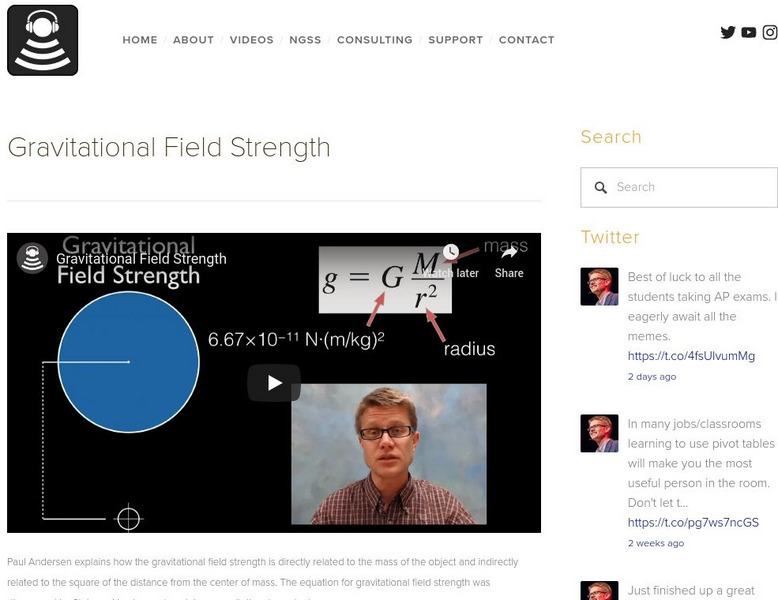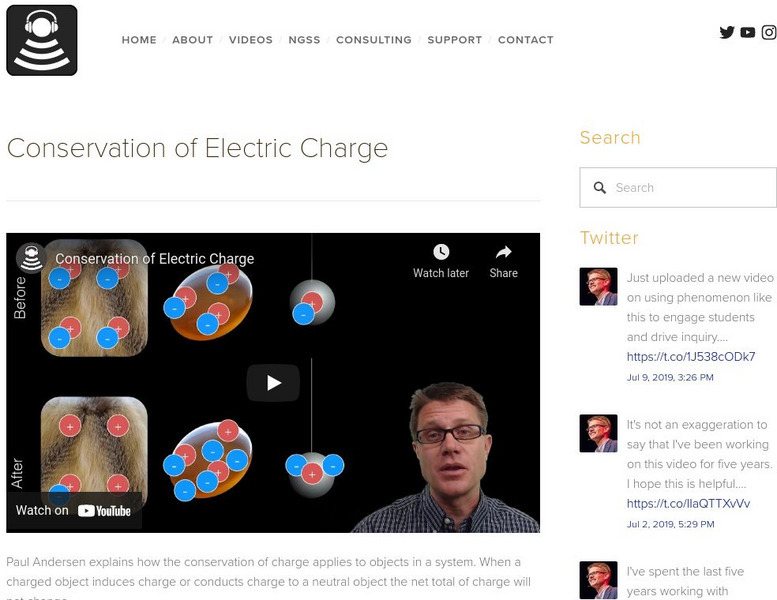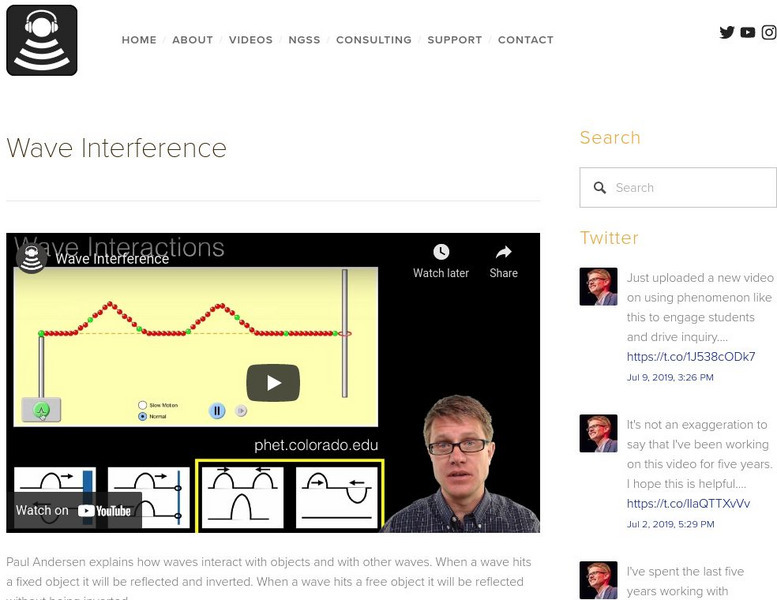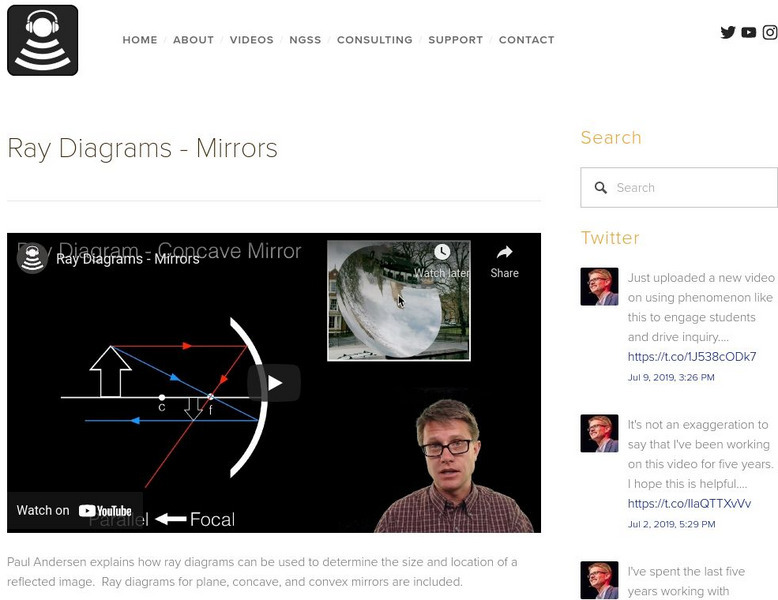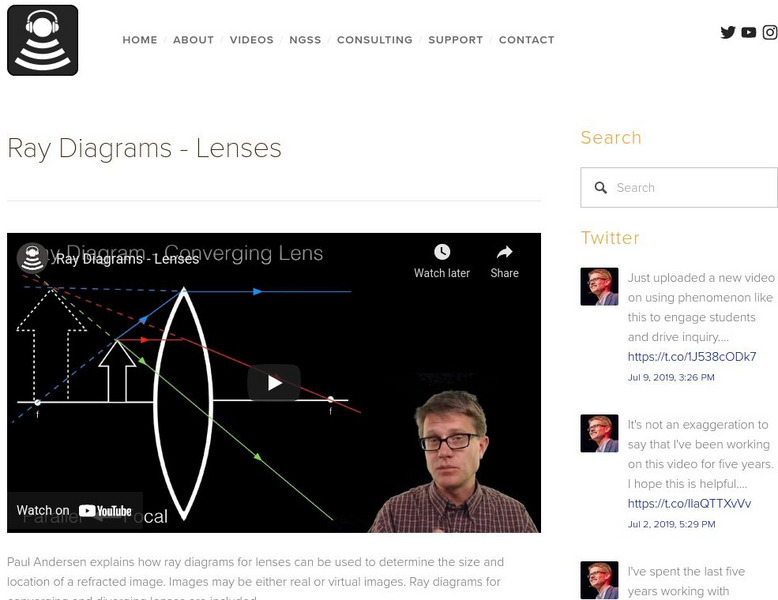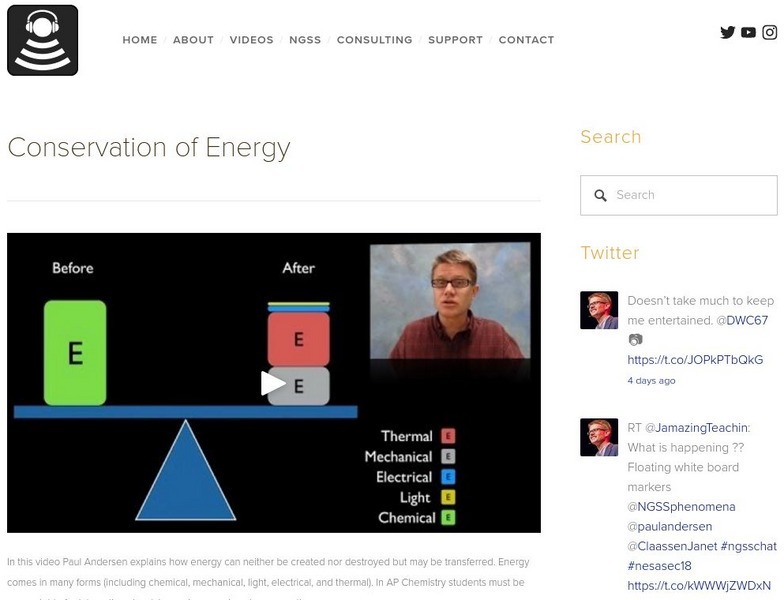Bozeman Science
AP Bio - Final Review
Paul Andersen answers over 500 questions from 39 states and 20 countries. Good luck on the AP Biology exam. Chapters View all AP Biology 0:05 Table of Contents 0:56 Test Statistics 4:51 Test Strategies 10:54 Labs 15:06 Cell Communication...
Bozeman Science
Muscle Control Puppet
The people at Backyard Brains use a spiker box to turn me into a puppet.
Bozeman Science
AP Physics Video Series - Overview
In this video Paul Andersen explains how his new video series for AP Physics 1 & 2 will be organized. He hopes to have the entire video series completed by this fall.
Bozeman Science
ESS2A - Earth Materials and Systems
In this video Paul Andersen describes the four major spheres on planet Earth. The geosphere makes up the mass of the planet and includes the major landforms. The hydrosphere is all of the water and the atmosphere is all of the gases. The...
Bozeman Science
ETS2A - Interdependence of Science, Engineering and Technology
In this video Paul Andersen explains how science is dependent upon engineering which is dependent upon science which is dependent up engineering which is dependent upon science which is dependent up engineering which is dependent upon...
Bozeman Science
Bozeman Science: Gravitational Field Strength
Find out how the gravitational field strength is directly related to the mass of the object and indirectly related to the square of the distance from the center of mass. [5:38]
Bozeman Science
Bozeman Science: Gravitational Forces
Award-winning science teacher Paul Andersen helps make physics understandable as he explains how gravitational forces differ from the other three fundamental forces: electromagnetic, and strong and weak nuclear forces. [5:05]
Bozeman Science
Bozeman Science: Physics: Kirchhoff's Loop Rule
In this, video Paul Andersen explains how Kirchhoff's Loop Rule can be used to calculate the voltage of different components of a circuit. The sum voltage throughout an entire loop will sum to zero following the law of conservation of...
Bozeman Science
Bozeman Science: Physics: Conservation of Electric Charge
In this video, Paul Andersen explains how the conservation of charge applies to objects in a system. When a charged object induces charge or conducts charge to a neutral object, the net total of charge will not change. [6:07]
Bozeman Science
Bozeman Science: Physics: Kirchhoff's Junction Rule
In this video, Paul Andersen explains how Kirchhoff's Junction Rule can be applied to series and parallel circuits. Kirchhoff's Junction Rule is an application of the conservation of charge. The current into a junction will always equal...
Bozeman Science
Bozeman Science: Physics: Wave Interference
Paul Andersen explains how waves interact with objects and other waves. When a wave hits a fixed object, it will be reflected and inverted. When a wave hits a free object, it will be reflected without being inverted. [6:24]
Bozeman Science
Bozeman Science: Physics: Wave Diffraction
In the following video, Paul Andersen explains how waves will diffract (or bend) around an obstacle or while traveling through an opening. Diffraction will be maximized when the size of the opening or obstacle matches the wavelength. [4:20]
Bozeman Science
Bozeman Science: Physics: Interference Patterns
In this video, Paul Andersen explains how constructive and destructive interference can create interference patterns. Interference patterns can be created by all types of waves, including water, sound, and light. A classic experiment...
Bozeman Science
Bozeman Science: Physics: Diffraction Effects
Paul Andersen explains how diffraction can be affected by the size of the wavelength. When waves pass through an opening or move around an obstacle, a shadow region is created. The size of the shadow zone will decrease as the wavelength...
Bozeman Science
Bozeman Science: Physics: Ray Diagrams Mirrors
In this video, Paul Andersen explains how ray diagrams can be used to determine the size and location of a reflected image. Ray diagrams for plane, concave, and convex mirrors are included. [11:44]
Bozeman Science
Bozeman Science: Physics: Ray Diagrams Lenses
In this video, Paul Andersen explains how ray diagrams for lenses can be used to determine the size and location of a refracted image. Images may be either real or virtual images. Ray diagrams for converging and diverging lenses are...
Bozeman Science
Bozeman Science: Conservation of Energy
In the following video, Paul Andersen explains how energy can neither be created nor destroyed but may be transferred. Energy comes in many forms. [4:09]
Bozeman Science
Bozeman Science: Energy Changing Processes
In this video Paul Andersen explains how energy can enter and leave a system. The amount of energy a substance can receive through heating or lose through cooling is measured using the specific heat capacity. Take in the additional...
Bozeman Science
Bozeman Science: Calorimetry
Paul Andersen describes the history of calorimetry and explains how it can be used to measure energy changes in a system. The specific heat of water is well established and so as a system releases or absorbs energy from a surrounding...
Bozeman Science
Bozeman Science: Bond Length and Bond Energy
In this video Paul Andersen explains how the bond length and bond energy are calculated using an energy distance graph. The strength of the bond is determined by the charges in the constituent atoms. As the charge increases the bond...
Bozeman Science
Bozeman Science: Enthalpy of Reaction
Paul Andersen explains how the enthalpy of a reaction can be released in an exothermic or consumed in an endothermic reaction. According to Hess's law if the reaction is reversed the sign of the enthalpy of reaction is also reversed....
Bozeman Science
Bozeman Science: Intermolecular Potential Energy
Find out the importance of intermolecular forces in chemistry. Intermolecular forces exist between dipoles (like hydrogen bonds), between dipoles and induced dipoles (like Ar and HCl) and between induced dipoles. The energy of the force...

